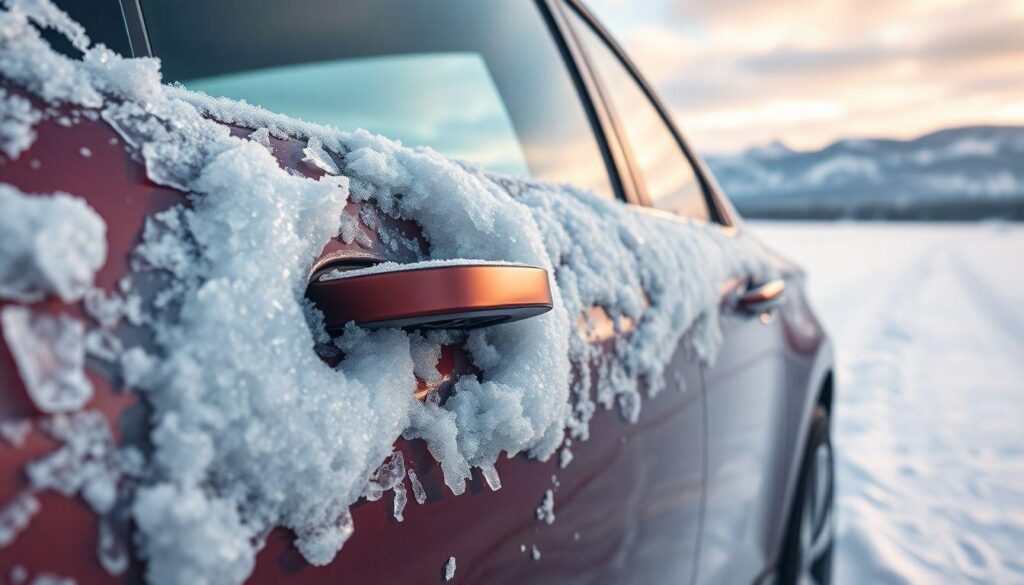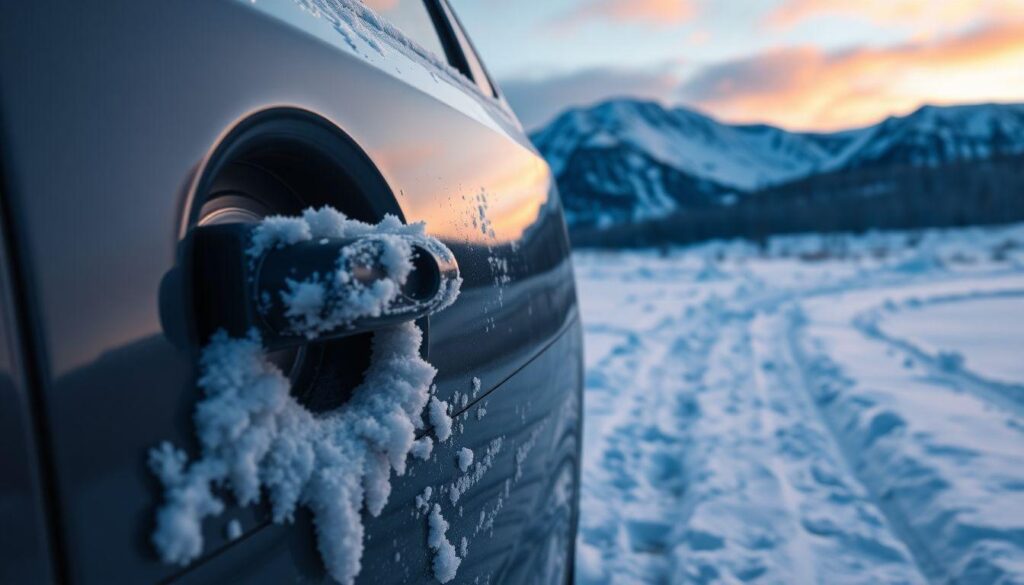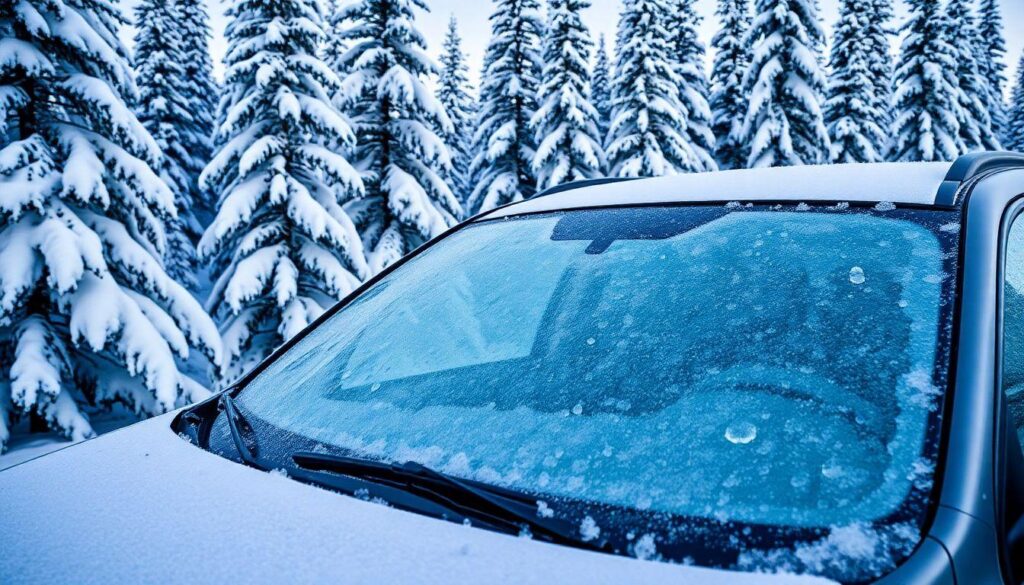Living through a Yukon winter means dealing with temperatures that can make your car feel like it’s been stored in a deep freezer. Nothing ruins a Monday morning quite like discovering your car door locks have turned into solid ice blocks, leaving you stranded in your driveway while you’re already running late for work.
The good news? You don’t need expensive gadgets or professional help to keep those frozen car door locks at bay. With a few simple tricks and household items, you can save yourself from the frustration of being locked out of your own vehicle when the mercury drops below freezing.
Understanding Why Car Door Locks Freeze in the First Place
Before we jump into solutions, let’s talk about what’s actually happening when your locks decide to stage their icy rebellion. Moisture gets into your lock mechanism throughout the day – maybe from washing your car, morning dew, or even just humidity in the air. When temperatures plummet overnight, that moisture crystallizes into ice, essentially jamming your lock solid.
Your car’s lock cylinder contains tiny moving parts that need to slide smoothly for your key to turn. When ice forms around these components, it’s like trying to operate machinery that’s been dipped in concrete. The metal contracts in cold weather too, making everything fit tighter than usual.
Think of it this way: your lock is basically a tiny mechanical puzzle, and ice is that annoying piece that doesn’t want to fit anywhere but somehow manages to gum up the whole system.
The Magic of Prevention Over Cure
Here’s something every Yukon resident learns eventually – it’s way easier to prevent frozen locks than to deal with them after they’ve already turned into ice sculptures. Prevention takes maybe two minutes of your time, while dealing with frozen locks can cost you twenty minutes of standing in sub-zero temperatures, frantically trying to get into your car.
Tip 1: The Petroleum Jelly Shield
This might sound weird, but petroleum jelly is your lock’s best friend during winter months. Take a small amount on your finger and coat the key and the lock cylinder opening. Don’t go overboard – you’re not frosting a cake here. Just a thin layer will create a moisture barrier that prevents water from settling in those tiny crevices where ice loves to form.
The beauty of this method lies in its simplicity. Petroleum jelly doesn’t freeze at normal winter temperatures, so it keeps working even when everything else around it is turning solid. Reapply every few weeks or after car washes, and you’ll notice a huge difference.
Some people worry about attracting dirt, but honestly, a little grime is better than being locked out of your car when it’s minus thirty outside. You can always clean it off later when the weather warms up.
Tip 2: The Hair Dryer Warm-Up Routine
If you have access to an outdoor electrical outlet, this technique works wonders for both prevention and emergency situations. On particularly cold evenings, give your lock a quick warm-up with a hair dryer before the temperature really drops overnight.
The warm air evaporates any moisture that might be lurking in the lock mechanism. It’s like giving your car a little spa treatment before bedtime. This method works especially well if you’ve just washed your car or if there’s been freezing rain during the day.
For emergency situations, the hair dryer can be your savior too. Just be patient and don’t try to force the key while the metal is still expanding from the heat. Let everything reach a comfortable temperature first.
Tip 3: The Strategic Parking Game
Location matters more than you might think. Parking your car facing east means the morning sun hits your driver’s side door first, naturally warming up that lock. Even weak winter sunlight can make enough difference to prevent ice formation or help melt light frost.
If you have options for where to park, choose spots that offer some protection from wind and precipitation. A carport, garage, or even parking close to a building can create a microclimate that’s just warm enough to prevent freezing.
Consider the prevailing wind direction in your area too. Yukon winds can be brutal, and they carry moisture that settles into every crack and crevice of your vehicle. Positioning your car so the locks face away from the wind reduces moisture exposure significantly.
Tip 4: The Lock De-Icer Solution You Can Make at Home
Commercial de-icers work great, but you can make an equally effective solution with items you probably already have. Mix equal parts white vinegar and water in a small spray bottle. The acetic acid in vinegar has a lower freezing point than water, making it effective at melting ice and preventing new ice from forming.
Apply this solution to your locks in the evening before particularly cold nights. The vinegar smell dissipates quickly, and unlike some commercial products, this won’t damage your car’s finish if you accidentally spray it on painted surfaces.
Another homemade option involves mixing rubbing alcohol with water in a 1:1 ratio. Alcohol has an even lower freezing point than vinegar, making it incredibly effective for preventing frozen car door locks. Keep a small bottle in your purse or coat pocket for emergencies.
Tip 5: The Key Warming Technique
Sometimes the simplest solutions are the most effective. Before heading out to your car on cold mornings, warm your key with your hands, a lighter, or by holding it against a warm surface for a few seconds. A warm key can often melt light ice formation just from contact.
This technique works best for minor freezing issues rather than completely frozen locks. The metal key conducts heat directly to the lock mechanism, often providing just enough warmth to free up frozen components.
If you’re using a lighter to warm your key, be sensible about it. Heat the key gradually and let it cool slightly before inserting it into the lock. You don’t want to damage the lock’s internal components with excessive heat.
When Prevention Meets Reality
Even with the best prevention strategies, Yukon winters can be unpredictable. Sometimes you’ll still encounter frozen locks despite your best efforts. Having a backup plan makes all the difference between a minor inconvenience and a major headache.
Keep that homemade de-icer solution in your house rather than your car – it won’t help you if it’s frozen solid in your glove compartment. Consider giving a spare key to a trusted neighbor or family member who lives nearby. Remote car starters, while an investment, can be absolute lifesavers for warming up both your engine and your locks before you even step outside.
The Bottom Line on Winter Car Care
Taking care of your car during Yukon winters isn’t just about convenience – it’s about safety and reliability when you need your vehicle most. These simple prevention techniques require minimal time and expense but can save you from potentially dangerous situations.
Remember that consistency matters more than perfection. Even if you only remember to apply petroleum jelly every other week, or only use the de-icer solution on nights when the forecast predicts extreme cold, you’re still ahead of the game. Every small action you take reduces the likelihood of dealing with frozen car door locks when you’re already running late and the temperature is unbearable.
Winter in the Yukon doesn’t have to mean constant battles with your car. With these five simple strategies, you can maintain access to your vehicle regardless of what the weather throws at you. If you found these tips helpful, feel free to share this article with your friends and followers who might be struggling with the same winter car challenges!






